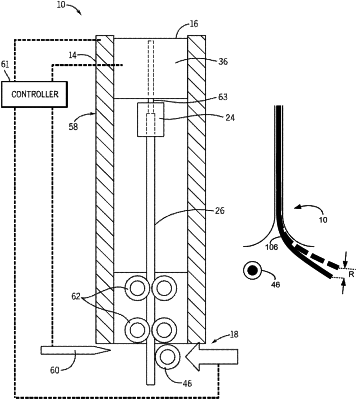| CPC A61B 17/8863 (2013.01) [B21D 7/12 (2013.01); B21D 7/14 (2013.01); B21D 43/006 (2013.01); B21F 45/008 (2013.01); A61B 17/7013 (2013.01); B21D 7/08 (2013.01); B21F 1/008 (2013.01)] | 12 Claims |

|
1. A method for bending a rod to be implanted into a patient using a bending system including a linear movement device, a rotational movement device, and a bending device, the method comprising:
determining a shape for the rod to be formed into to allow the rod to be implanted into a patient;
defining a plurality of line segments along the rod;
identifying a first angle measurement to be formed between a first two adjacent line segments of the plurality of line segments and a second angle measurement to be formed between a second two adjacent line segments of the plurality of line segments;
identifying bending parameters to perform on the rod to form a first bend matching the first angle measurement and a second bend matching the second angle measurement;
controlling a linear distance of travel of the bending device using the bending parameters to form the first bend between the first two adjacent line segments;
monitoring contact between the bending device and the rod after the first bend is formed; and
controlling the linear distance of travel of the bending device using the bending parameters and the monitored contact to form the second bend between the second two adjacent line segments while accounting for the first bend, wherein controlling the linear travel distance of the bending device using the monitored contact to form the second bend includes detecting if the bending device contacts the rod at a location offset from center during the linear distance of travel as a result of the first bend.
|